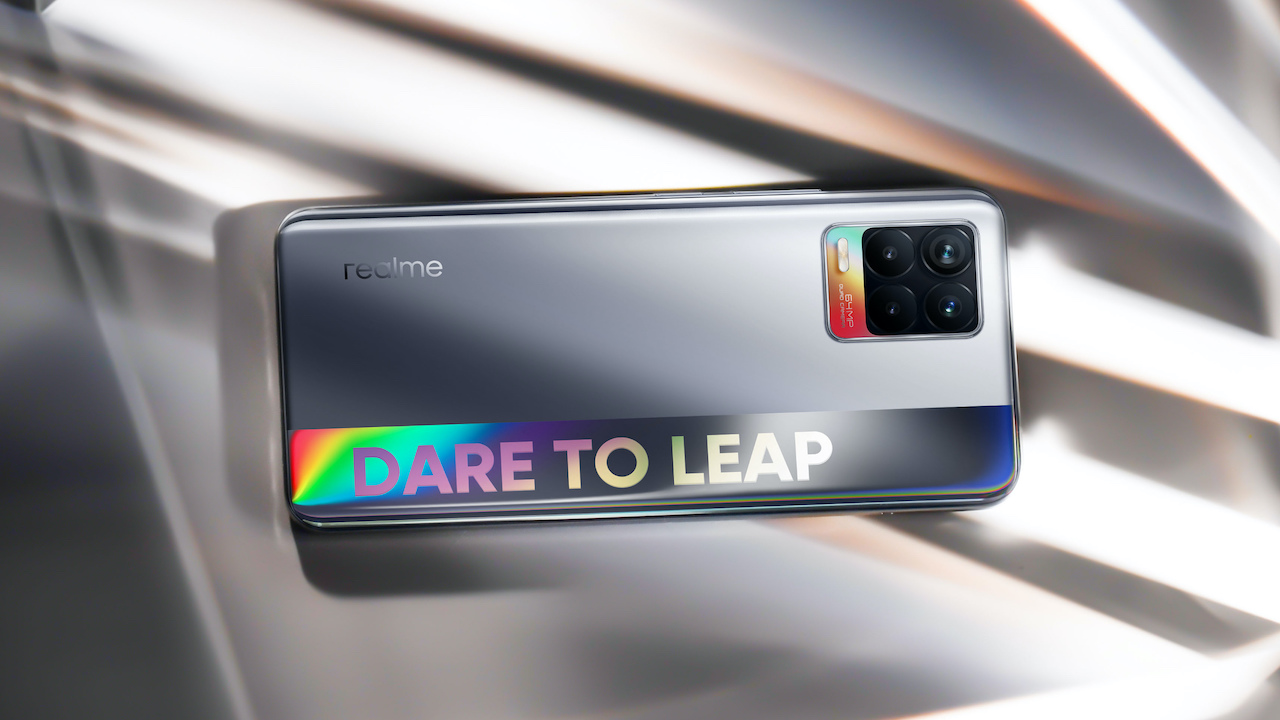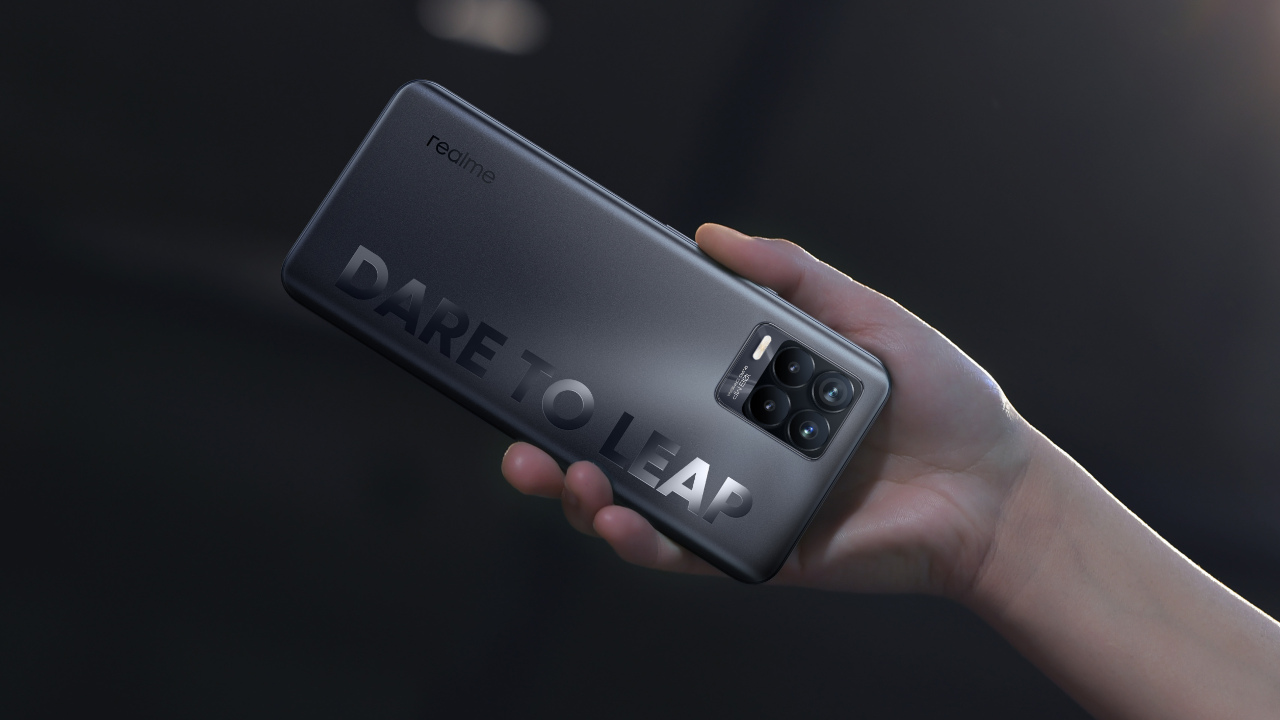India
realme 8 series launches with quad rear camera setup
Powered by Snapdragon 720G

realme launched the realme 8 and realme 8 Pro in India and the duo shall compete against Xiaomi’s Redmi Note 10 series. After a sabbatical of three months, brands are actively launching new phones to kick-start 2021.
The pair of smartphones has a super slim body and an infinite bold design with the AG-Crystal process. Essentially, the back is made of plastic. The rear of the phone has realme’s slogan “dare to leap” engraved and it’s massive. realme branding takes a back seat, but the brand is targeting the youth with these gaudy designs.
Both the phones have a 6.4-inch AMOLED display with Full HD+ resolution and an in-display fingerprint scanner. The refresh rate is still 60Hz, but there’s support for always-on display. They run on realme UI 2.o based on Android 11 out-of-the-box.
The realme 8 Pro is powered by a Snapdragon 720G processor with up to 8GB RAM and 128GB internal storage. On the rear is a quad-camera setup consisting of a 108-megapixel primary camera, an 8-megapixel wide-angle lens, a 2-megapixel macro sensor, and a 2-megapixel portrait lens.
Backing these internals is a 4500mAh battery with 50W fast charging. realme claims it can charge the full battery in 47 minutes.
On the other hand, the realme 8 sports a MediaTek Helio G95 processor with up to 8GB RAM and 128GB internal storage. The rear gets a 64-megapixel primary camera, while the other three sensors are the same as the realme 8 Pro. Both the phones have a 16-megapixel front camera for selfies. Backing these internals is a 5000mAh battery that supports 30W fast charging.
Pricing
realme 8 Pro
Colors: Infinite Blue, Infinite Black, Illuminating Yellow
- 6GB+128GB – INR 17,999 (US$ 247)
- 8GB+128GB – INR 19,999(US$ 275)
realme 8
Colors: Cyber Silver and Cyber Black
- 4GB+128GB – INR 14,999 (US$ 206)
- 6GB+128GB – INR 15,999 (US$ 220)
- 8GB+128GB – INR 16,999 (US$ 234)
The sale starts on March 25 via realme.com, Flipkart, and offline partner stores.


There’s no doubt that India is a major market for technology. While the country has its own brand preferences outside of the world’s usual, everyone still wants to get a piece of the market. To the dismay of global companies, the country is realizing the potential of its own market. Effective immediately, India has started restricting imports for new laptops, tablets, and PCs.
Recently, India made some headlines in the smartphone industry. A few companies, including Apple, have poured funds into building factories in India. Locally produced devices will allow these companies to attract the Indian market better. With the new regulations out today, it looks like these brands are going to enjoy a head start over others who aren’t in the country yet.
The Indian government introduced a new restriction (via Reuters) against the importation of “laptops, tablets, all-in-one personal computers, and ultra-small form factor computers and servers” made from other countries. Customers, however, will get an exemption. Airline passengers can still bring in these devices in their luggage. Additionally, a single imported device is allowable when bought through e-commerce platforms. Companies can import their products only by applying for a special license.
In a nutshell, bulk orders without a license are out. The government is instead encouraging users to buy locally produced products as part of its “Make in India” program. At the very least, it’s not a total ban on foreign brands. For example, Dell, HP, and Lenovo are exempt from the regulations since they already have production facilities built in the country.
SEE ALSO: Samsung overtakes Xiaomi as top phone brand in India

Attacking a huge smartphone market is difficult. With preferences constantly evolving, it can get tricky to figure out the best lineup to capture most of a market. Samsung, however, has just done it. In the last quarter of 2022, Samsung has taken the crown from Xiaomi as the bestselling smartphone brand in India.
India is an important market for most smartphone brands. It’s one of the largest markets in the world. However, despite its size, the biggest players are often those who offer more affordable devices for consumers. Budget is the name of the game if a brand wants to make it big in the country.
Things are changing, though. According to new market data (via Reuters), Samsung has nabbed the throne from the former leader, Xiaomi. In the last quarter of 2022, the Korean brand grabbed 20 percent of the market, while the latter only got 18 percent.
In a trend dubbed as premiumization, Indian consumers are reportedly enjoying more disposable income, resulting in more willingness to buy pricier products. Additionally, the report hints that consumers have started equating lower prices with inferior quality.
With the market trending towards more premium products, Samsung took the lead with a lineup that consists more of midrange to premium devices. It will also be interesting to see if Apple, an even more premium brand, can also make a dent in the Indian market.
SEE ALSO: Buyer’s Guide: Samsung Galaxy S23 Ultra

For one of the largest smartphone markets in the world, India is one of the rarer countries where Apple does not outright dominate. Undoubtedly, the company is trying to change that. Ongoing job listings in India are suggesting that Apple is ready to open its first brick-and-mortar store in the country.
First reported by Financial Times, Apple has posted job openings in India for several retail roles including for the iconic Genius Bar. Another clue even indicates that some spots have already been filled ahead of time. A few employees in the country have reportedly posted about their new jobs on LinkedIn.
Unfortunately, none of the job listings show how many stores are planned and where they will be. Narrowing things down by a bit, a few of the confirmed employees are from Mumbai and New Delhi. The report also does not indicate when the stores will open. However, since a few have already been hired, a grand opening might be coming soon.
Apple has a lot to gain by strengthening its foothold in India. The country is an important stronghold for smartphone companies. However, the company might find things harder as time goes by. The country recently dictated that brands must switch to USB-C if they want to sell their devices in India. All over the world, Apple remains the last stalwart against adopting the more universal standard.
-

 Events2 weeks ago
Events2 weeks agoStellar Blade: PlayStation taps cosplayers to play Eve for game’s launch
-

 Features1 week ago
Features1 week agoFortify your home office or business setup with these devices
-

 Gaming2 weeks ago
Gaming2 weeks agoThe Rogue Prince of Persia looks like an ultra-colorful roguelite
-

 Accessories2 weeks ago
Accessories2 weeks agoLogitech unveils G Pro X 60 gaming keyboard: Price, details
-

 Reviews1 week ago
Reviews1 week agorealme 12+ 5G review: One month later
-

 Gaming2 weeks ago
Gaming2 weeks agoLenovo confirms development of a Legion Go 2
-

 Deals2 weeks ago
Deals2 weeks agoTCL P635 TV: Big savings for TCL’s anniversary
-

 Gaming1 week ago
Gaming1 week agoNew PUMA collection lets you wear PlayStation’s iconic symbols

























